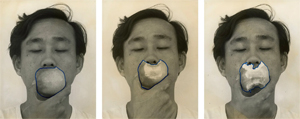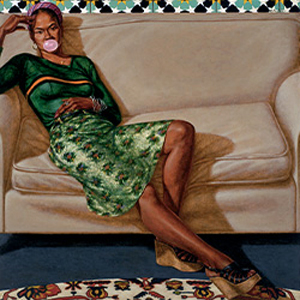12.6.23 — Roots That Clutch
Not every artist is in search of her roots, but Muriel Hasbun has them abundantly. She can look beneath the surface to dental records from the past, because her father was a dentist. She can look deep into the earth as well, to seismic records, including from El Salvador, where she was born in 1961.
In her photography, they become part of a personal history, a family history, and a history of her time. They are testimony to her love, at the International Center of Photography through January 8. If they are no less shadowy for that, in several languages and in cryptic images, she knows the shadows as intimately as the substance. Together with past reports on family matters at ICP, it is also the subject of a longer and fuller review in my latest upload.
One expects multiculturalism in art these days, but not often like this. Hasbun’s mother was Jewish, half French and half Polish, and was fortunate in escaping the Nazis—first to Paris from Vichy, then across the Atlantic. A photo shows her when she arrived. Hasbun calls it Je Me Souviens, or “I remember,” and surely she herself remembers as well. Her father was Christian, half Salvadorian and half Palestinian. Si Je Meurs Je Me Souviens, a later title runs, or “If I Die I Remember,” and she insists on memories, even in death.
She herself fled El Salvador in 1979, after a right-wing military coup soon embraced by Ronald Reagan’s United States—first to France and then to Washington, D.C. She could have been in search of her mother’s past as much as her own present, but these things for Hasbun are hard to pull apart. (She also has a degree in French lit.) All this could easily become a dry litany, but for her they are about not a cultural affiliation, but the family she knew. It is not so easy to make art about love without its becoming a record of loss as well, as in “Love Songs” at ICP just this year. But that, too, is a part of life.
The show itself has a multilingual title, “Tracing Terruño,” or home ground. “What are these roots that clutch, what branches grow out of this stony rubbish?” For T. S. Eliot “a heap of broken images,” but exactly that makes “The Waste Land” a satisfying poem and Hasbun’s photography a satisfying art. Santos y Sombra from the 1990s mixes recovered and original images to evoke its saints and shadows. They run to tropical silhouettes against pale skies, at times with overlays added in the darkroom. They, too, are what a title calls Presencia, and Todos los Santos (Para Subir al Cielo), or “All the Saints (to Go Up to Heaven).”
Heaven may not be easy to reach, but it still comes down equally to family and art. She applies chemicals to photographic plates with her grandmother’s rags, so that they pay homage at once to May Ray in Surrealism and to home. The dental x-rays might seem to step away from anything at all familiar, but they, too, look in all directions. As X Post Facto, they might be pillars in a dry landscape or mathematical unknowns. They also simply come after. Yet they look all the more nuanced and colorful for their detachment.
Seismic disruptions enter with Pulse: New Cultural Registers starting in 2020. (An earlier Central American landscape did show a volcano.) Some prints have thick black frames, setting off the presences. Others look paler than ever, with physical layers like people in their clothing. Her grandmother returns in person, I shall guess to honor her death. The work has become more physical, but also more elusive and ephemeral. It is shaking things up.
Hasbun has had other work that does not quite fit, almost always in series. Still, this is enough for a sizable retrospective and a sprawling history. It also has resonances with “Immersion,” a three-person show on the same floor. It, too, is creating a sense of place, of home turf. It has the taller rooms, while Hasbun has the longer walls, in accord with her traditionalism and persistence. One can think of the entire show as her only installation and her only home.
Read more, now in a feature-length article on this site.

